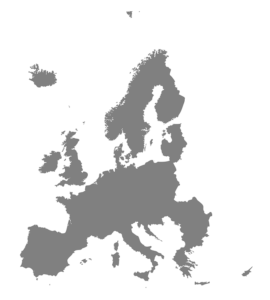The European Commission and Member States should make more effective use of Cohesion funding, according to a new report from the European Court of Auditors. Delays in finalising the legal framework and slow progress with spending plans put national administrations under pressure to use the money quickly, sometimes at the expense of performance, warn the auditors. The Commission was late in addressing spending difficulties in some programmes;
however, its actions and those of the Member States had a positive impact on absorption.
 Cohesion funds are allocated in advance to Member States for a seven-year spending period and put at the disposal of Member States in annual budgetary allocations that must be used within a definite time period. The auditors looked at spending during the 2007-2013 period and the action taken by Member States, with the support of the Commission, to increase the absorption of funds where problems were identified. During this period, overall funding for the EU-28 Member States amounted to €346 billion. They also compared spending patterns with the 2000-2006 and 2014-2020 periods. They visited four Member States: the Czech Republic, Hungary, Italy and Romania.
Cohesion funds are allocated in advance to Member States for a seven-year spending period and put at the disposal of Member States in annual budgetary allocations that must be used within a definite time period. The auditors looked at spending during the 2007-2013 period and the action taken by Member States, with the support of the Commission, to increase the absorption of funds where problems were identified. During this period, overall funding for the EU-28 Member States amounted to €346 billion. They also compared spending patterns with the 2000-2006 and 2014-2020 periods. They visited four Member States: the Czech Republic, Hungary, Italy and Romania.
They found that for both the 2007-2013 and 2014-2020 periods, the late adoption of the legal framework meant that operational programmes also ran late. For the 2007-2013 period, most were not approved until twelve months into the programme period, which had an inevitable knock-on effect on spending.
The 2007-2013 period began slowly, say the auditors, but 2014-2020 was even slower. In addition, the overlap of programme periods meant that Member States were still spending money from the previous period after the next programmes had started.
“It is crucial to avoid a situation where large amounts of money need to be used in a rush at the end of a programme period, because insufficient consideration may be given to value for money. Making use of the money becomes an end in itself, rather than a means of achieving policy objectives,” said Henri Grethen, the Member of the European Court of Auditors responsible for the report.
During the 2007-2013 period, the Commission did monitor the absorption of funds – the degree to which they were used in the Member States. But it was only towards the end of 2014 that it put in place a Task Force to assist Member States facing difficulties in spending for some programmes. The support provided by the Task Force, together with the actions undertaken by the Member States, led to a marked increase in spending: at the start of 2018, payments had reached 97.2% of budgetary allocations. By the end of 2017, €4.4 billion had not yet been used.
The Commission is still in the process of closing the 2007-2013 period, and the total value of payments and unused funding is still to be determined.
To improve the way funding was absorbed, the Member States revised programmes, split projects into phases and used EU funding to co-finance projects already funded nationally.
However, some of these measures focused mainly on using the money and complying with rules rather than results, say the auditors, and the frequent revisions of programmes call into question the soundness of the analysis underlying the programming process. In addition, the Commission has no comprehensive overview of the measures used or their impact, due to a lack of information provided by Member States and limitations in reporting.
The auditors recommend that the European Commission should:
- propose to the legislative authorities a timetable to ensure that implementation can start at the
beginning of the programme period; - ensure that operational programme revisions are based on a sound and comprehensive
assessment and aim to provide better results; - monitor absorption, identify slow and rapid absorption and assess the impact of measures;
- ensure the focus is on the delivery of results.
Special report 17/2018 “Commission’s and Member States’ actions in the last years of the 2007-2013 programmes tackled low absorption but had insufficient focus on results” is available on the ECA website (eca.europa.eu)
Source: ECA